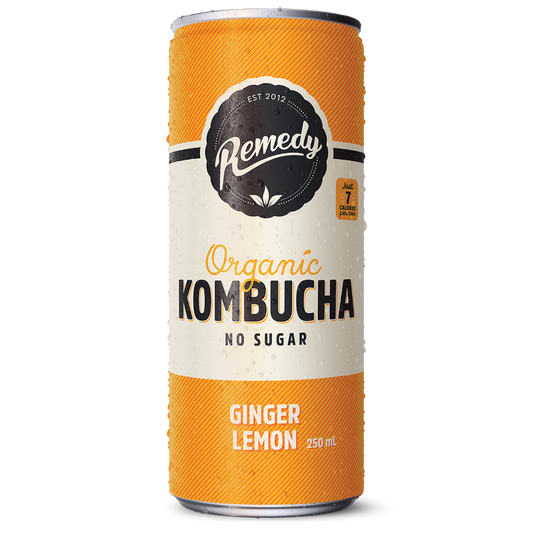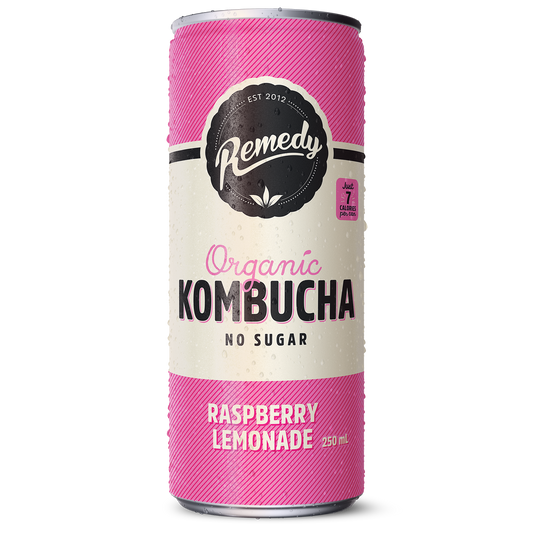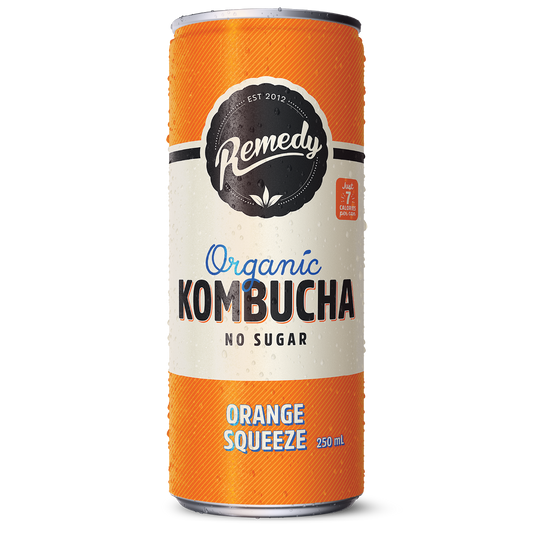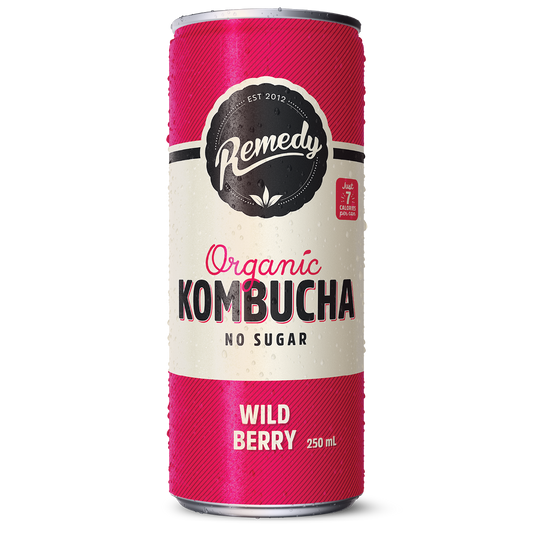If you’re a real booch head (first off, welcome – you’re in very good company here), you probably know all too well that there is a huge disparity between different kombuchas you see on supermarket shelves.
Not just in the taste department but in their authenticity.
As you’ll know, there’s a great debate about what makes for a “real” kombucha. That’s why we’ve invited our favourite nutritionist and all ‘round legend, Jacqueline Alwill, to the blog to bust some myths about what makes a “real” kombucha.
Myth: Kombucha needs sugar to be real
This is true, but kombucha only needs sugar during fermentation.
Remedy Kombucha has healthy live cultures in every bottle or can that use sugar as an energy source throughout the long-aged brewing process. Once it has finished brewing, however, all the sugar has been consumed, leaving us with healthy organic acids and live cultures in every bottle or can of Remedy Kombucha.
The process of fermentation is a series of steps:
Step 1: Brewing the tea. Black and green organic tea leaves are steeped in hot water to extract flavour and nutrients. Raw organic sugar is added to provide food for the SCOBY.
Step 2: Cooling. After brewing, the sweetened tea is cooled to room temperature.
Step 3: SCOBY is added. The cooled tea is transferred to a fermentation vessel such as an open/wide top jar (around 3-4L), and the SCOBY (symbiotic culture of bacteria and yeast) is added. The SCOBY floats on the surface and initiates fermentation.
Step 4: Fermentation. Over a long 30-day process in the Remedy Fermentary, the SCOBY metabolises the sugars in the tea, producing organic acids, carbon dioxide (which contributes to the fizz), and small amounts of alcohol (in the case of Remedy, less than 0.5%).
Step 5: Formation of new SCOBY. During fermentation, a new layer of SCOBY forms on the surface of the kombucha.
Step 6: Taste and testing. The taste of kombucha becomes progressively more acidic and less sweet as fermentation progresses. To determine readiness, taste tests are done to achieve the desired balance of sweet, tart, and fizzy flavors. In the case of Remedy, they test to ensure there is no sugar left in the brew.
Step 7: Bottling. Once fermentation is complete, the kombucha’s scoby is removed and the delicious fermented tea is bottled, ready for consumption.
Myth: Real kombucha must be kept in the fridge
Kombucha only needs to be kept in the fridge if it still contains sugar.
This is because fermentation likes warm environments, so if left with sugar and on a shelf, then it can kick start refermentation. Remedy doesn’t risk this, their long fermentation process brews out all the sugar in Remedy Kombucha.
When you flip the pack / can / bottle of Remedy Kombucha and read the nutrition information panel you’ll see:
Carbohydrates - less than 1g
Sugars - 0.0g
Sugars are added sugars to the final product, of which there are none, AND none of the sugar added to the original brew remains either. The clever SCOBY (symbiotic culture of bacteria and yeast) has used all the sugars during fermentation as its energy source, with no sugar remaining. So you can feel confident storing your Remedy Kombucha in your pantry or handbag without concern about re-fermentation.
Thanks for clearing that up for us, Jacq! Now you know a sugar-free kombucha that is A-OK in or out of the fridge is still considered a “real” kombucha.
If reading up on these delish brews has made you thirsty, it might be time to treat yourself to your fave flave of Remedy Kombucha.


.png?v=1719371959141)



